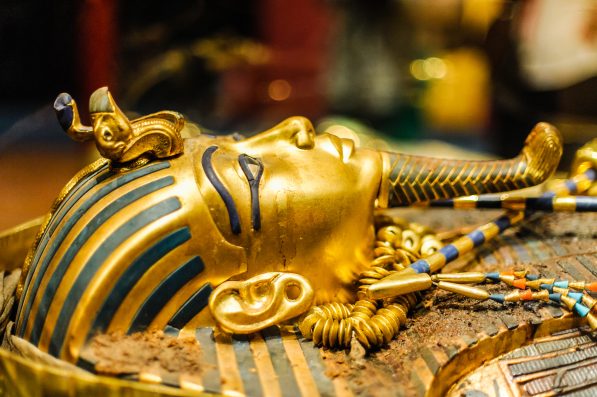While King Tut’s Cause Of Death Was Previously Believed To Be Malaria, A New Theory Suggests The Teenage Boy May Have Gotten Into A Chariot Racing Accident While Under The Influence

King Tutankhamun, one of the most prominent pharaohs of ancient Egypt, died at the age of 19. Researchers believed that the cause of his death was a disease called malaria.
However, a new theory as to how he met his demise has surfaced, and it involves wine and chariot racing.
A forensic Egyptologist named Sofia Aziz presented this theory at the Cheltenham Science Festival. She argued that even though King Tut was a pharaoh responsible for ruling Egypt, he was still a teenage boy with a love for alcohol, as bold and brash as any other.
So, while he was under the influence, he may have gotten into a chariot racing accident that resulted in a fatal crash, crushing one side of his body and killing him.
King Tut’s tomb was originally discovered in 1922 by Howard Carter. In ancient Egypt, it was tradition to bury people with objects they enjoyed while they were alive so they could take them into the afterlife.
And can you guess what King Tut’s tomb was filled with? The most notable items were a collection of wine and six different chariots, providing a strong basis for Aziz’s hypothesis.
King Tut’s tomb also contained the first evidence of white wine from the region. Before the find, it was once believed that ancient Egyptians only drank red wine, but the samples taken from the tomb proved that was not the case.
In 2013, an analysis of King Tut’s remains was conducted. The study found that one side of his body had been crushed, destroying his ribs, pelvis, and heart. So, the idea that the boy was overcome with illness may not be an accurate one.
Those who disagree have pointed out that King Tut had a clubbed foot that would’ve prevented him from driving the chariots.

Dieter Hawlan – stock.adobe.com – illustrative purposes only
However, others who supported the theory of King Tut being an active teenage boy countered back with the fact that there was no evidence of deformities in his foot, and it did not stop him from participating in adventures.
Additionally, his foot condition may have even come from poor embalming.
Unfortunately, the concept has remained nothing more than a theory, as no further evidence has been discovered to back it up.
Was the boy king a disease-stricken pharaoh? Or was he a teenage thrill-seeker who had a little too much to drink? Perhaps we will never know for certain.
Sign up for Chip Chick’s newsletter and get stories like this delivered to your inbox.
More About:News





